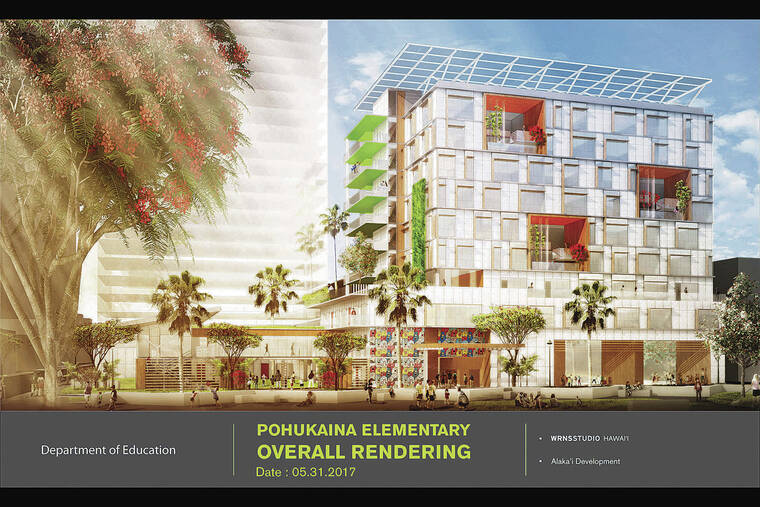As far as urban renewal goes, Kakaako has been pretty successful so far. In the neighborhood between Cooke and South streets, the sidewalks teem with people. Sleek apartment buildings, chic restaurants and better-than-average shopping have attracted new residents and visitors alike.
Yes, Honolulu’s newest urban community is taking shape, with one notable exception: a public school. Numerous attempts to build a vertical elementary school on the limited space next to historic Mother Waldron Park have stalled over the years. Now, unfortunately, the effort appears to have stalled again.
The Hawaii Housing Finance and Development Corp. (HHFDC) issued a request for proposals seeking a developer to build an affordable housing high-rise on state land with a 75-year lease. Bids are due March 15. But unlike some previous attempts over the past 10 years, a school would not be integrated into the building project; at most, the developer would be required to provide parking spaces for a school that could eventually be built on adjacent land.
Even if this is the best HHFDC can do for the moment, it’s still short-sighted. One of the key elements of Kakaako residential development has been its appeal to a broad demographic, particularly young families with school-age children.
A elementary school — one within walking distance — would be an essential part of this diverse, dense urban neighborhood. The state Department of Education, recognizing the need, has sought funding over the years. It has never received enough, while the initial cost estimates of a $40 million school have risen to $63 million as of 2020. It’s safe to assume those cost estimates will continue to grow.
The best outcome would be to have the state players involved — HHFDC, DOE and the Legislature — to get on the same page in supporting a new school for Kakaako, given that the state’s coffers are flush right now.
Granted, there are hurdles. The DOE is struggling to keep enough teachers in the schools it has; the retention rate after five years of employment is about 50%. Finding a developer willing to build affordable housing is hard enough without adding a school to the mix — especially if the Legislature won’t come up with the funding.
But surely it’s wise to plan for the future. A well-designed, integrated project that includes housing and a school makes sense for this growing residential district. And even the past offers lessons for the present. After all, in the 1900s, before it became cluttered with warehouses, Kakaako was a residential district, served by Pohukaina School — where Margaret “Mother” Waldron taught.

